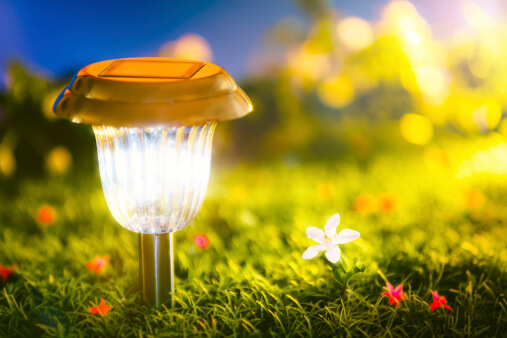
Choose the Right Landscape Lighting
Lighting your landscape is a smart decision. It’s an effective way to beautify your surroundings, increase day-to-day enjoyment and add value to your home.
Choosing the right lighting system can be a challenge, however, because there are so many variables to consider. You can simplify the decision-making process by focusing first on these fundamentals.
Power Source
There are two types of power systems: low-voltage and solar.
Low-Voltage. Low-voltage systems are hardwired installations with a reduced power supply. Step-down transformers convert normal 120-volt power to 12-volt power, making the system safe and reducing operational costs. Available for decades, low-voltage systems deliver reliable light and power different types of lighting systems, which is why they’re the most common system installed today.
Solar. Solar systems are powered by batteries charged by sunlight. Some feature central power packs that support multiple lights, some have lights with individual solar cells, others offer a mix of both. Since the sun supplies the power, they have very low operating costs. They perform best in bright, sunny climates that provide the requisite daily dose of sunlight, but in spite of advancements, light levels are notoriously feeble even in ideal conditions. As a result, most professionals prefer not to install solar systems.
In other words, if you want reliable and effective landscape lighting, bypass solar and invest in a low-voltage system.
Lighting Technology
Low-voltage systems power halogen, incandescent and LED fixtures, the three most common lighting technologies.
Halogen. Halogen lights provide high-quality light with a warm, welcoming glow. Until recently, the majority of landscape lighting systems featured halogen bulbs. The fixtures and bulbs are relatively affordable, and on average they cost 70% to 80% less than LEDs. Bulbs need to be replaced once or twice a year, however, based on how many hours you operate the system.
Incandescent. Incandescent lights deliver high-quality light with a cooler, whiter appearance than halogen. Incandescent fixtures can be integrated into comprehensive systems and positioned in select locations where crisp, white light is required. Like halogen, the bulbs are more affordable, but they too may need to be replaced once or twice a year based on usage.
LED. In recent years, LED technology has improved significantly. Fixtures and bulbs cost more up front, but monthly operating costs are 60% to 70% lower than halogen. Light quality is bright, clean and colors range from warm white to white or cool white. Often because of the low power requirements, more lights can be connected in a single run and transformers are generally smaller, both of which reduce installation costs. Most professionally installed systems feature bulbs that last 10 years.
Once you’ve determined which power source and lighting technology best suits your needs, discuss your goals and budget with a landscape lighting contractor. Together you can develop a cohesive plan and work through the next round of decisions regarding fixture types, uses, styles and placement.